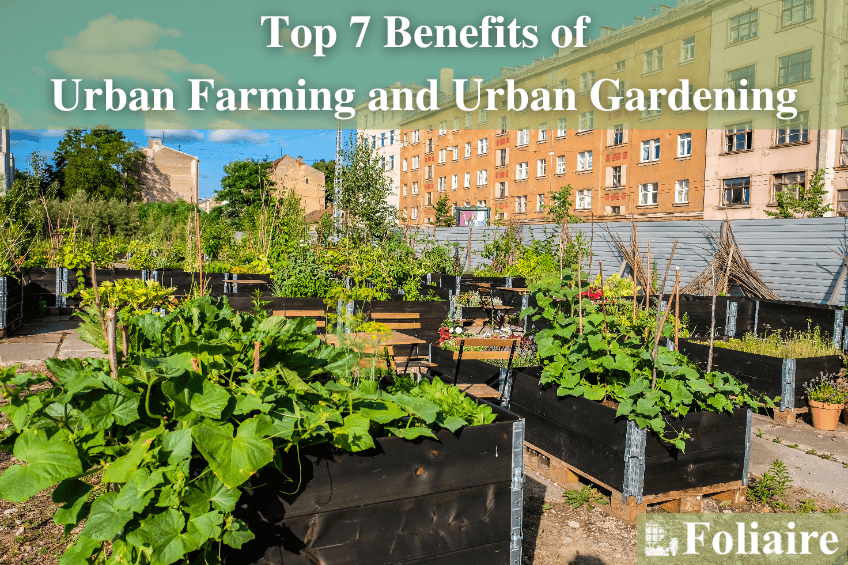Some Known Factual Statements About City Blooming
Some Known Factual Statements About City Blooming
Blog Article
Facts About City Blooming Uncovered
Table of ContentsCity Blooming Things To Know Before You Get ThisThe Buzz on City BloomingThe Single Strategy To Use For City BloomingThe 7-Minute Rule for City Blooming9 Simple Techniques For City Blooming
Intrigued in expanding food available for sale in the City of Chicago? Assuming about beginning an area garden? Changes to the Chicago Zoning Regulation allow farming usages like community yards and metropolitan ranches in several components of the city. Below is a list of regularly asked concerns regarding the rules and policies that farmers must consider when planning an urban farming project.
The zoning change does not modify any kind of various other codes taking care of composting, structure licenses, acquiring or leasing City possessed home, business licenses or ecological contamination. There are existing codes that control these problems and they continue to be in full impact and may be relevant to your project. Community gardens are normally owned or handled by public entities, civic companies or community-based companies and preserved by volunteers.
Urban farms expand food that is meant to be marketed, either on a not-for-profit or for-profit basis. Because of their commercial objective, city ranches require a service certificate. Yes. An area garden is allowed to market surplus generate that was grown on site if the sales are accessory or subordinate to the garden's primary objective described over.
The 7-Second Trick For City Blooming
The amount of compost product can not go beyond 25 cubic lawns at any provided time according to the requirements in 7-28-715 of the City's Municipal Code. Because the soil at most brand-new yard sites needs changing, garden compost, soil, wood chips, or other products can be acquired to create or improve the growing area.

If a building authorization is called for then the hoophouse will be taken into consideration an accessory structure. You can locate out more about the building permit requirements by calling the Division of Structures. The 25,000-square-foot dimension limit is meant to prevent a solitary area yard from controling a given block or taking away from the block's existing domestic or industrial personality.
The restriction does not apply to gardens located in Public Open Space (POS) districts. Can there be more than one community garden that is 25,000 square feet on a solitary block? Yes. The dimension restriction uses to specific gardens, not to specific blocks. No. Fencing is not needed, however, yards that have big parking locations might be called for to install fence or various other landscaping attributes.
The Ultimate Guide To City Blooming
B1 & B2 areas require that all industrial usage tasks be conducted indoors. R areas restrict industrial task. The guidelines mirror the function and intent of the Zoning Code. Is secure fencing needed for metropolitan farms? Yes. Fences might be needed, along with landscape design and testing, for sure car parking areas and exterior job or storage locations relying on location and the details activity occurring.
Yes. Urban farms need structure authorizations and zoning authorizations before building. Other kinds of city testimonial may be called for depending on certain frameworks, tasks, dimension, landscape design, licensing, public health and stormwater administration issues. Much of these needs are determined in the task style or permitting process, nonetheless, the applicant might be accountable to independently identify particular licenses or allows that might be required.
The Department of Service Matters and Consumer Defense can aid identify the specific type of business license that's needed. Off street parking is required for many industrial jobs in Chicago. The called for number of auto parking areas is based on the number of workers functioning on website and not the square video of the expanding space.
How City Blooming can Save You Time, Stress, and Money.

An urban farm can market garden compost product generated on site, nonetheless, the procedure needs to conform with the policies in 7-28-715 of the Chicago Municipal Code. Aquaponic systems are enabled indoors on urban ranches in numerous zoning districts.
As much as five hives or colonies of honey may be maintained as an accessory use. Nevertheless, beekeepers need to sign up with the Illinois Division of Farming. For more details regarding the proposed zoning amendment you may contact the Division of Real Estate and Economic Development, Bureau of Preparation and Zoning at 312.744.8563.
Farming in cities and city areas An urban farm in Chicago. Urban farming describes numerous practices of cultivating. https://www.dreamstime.com/danielnold94107_info, handling, and distributing food in urban areas. The term additionally puts on the area tasks of animal husbandry, aquaculture, beekeeping, and horticulture in an urban context. Urban agriculture is identified from peri-urban agriculture, which takes area in backwoods at the edge of suburbs.
Things about City Blooming
, that seek to create social networks founded on a shared principles of nature and area holism. These networks can create by means official website of formal institutional support, ending up being integrated into regional community planning as a "shift community" activity for lasting urban advancement.
Some of the initial evidence of metropolitan farming comes from Mesopotamia.
Report this page